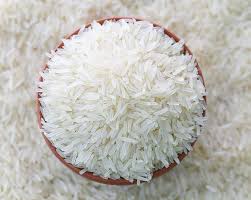Public-sector to drive genome-edited rice seeds: Govt
By Sandip Das
The agriculture ministry has stated that since the world’s first two genome-edited and high-yielding rice varieties unveiled recently have been developed through indigenous efforts, the seeds would be available to farmers through state-owned entities.
“There is no issue of bearing on the seed sovereignty of India’s farming community,” the ministry has stated amid concerns raised by certain quarters about potential intellectual property rights (IPRs) issues when the rice varieties would get ready for commercial release.
Genome-edited rice
The ministry has stated that the genome edited varieties DRR Dhan 100 (Kamala) and Pusa Rice DST 1 unveiled by the agriculture minister Shivraj Singh Chouhan in May have been developed from public-sector-bred parent varieties BPT 5204 and MTU 1010, respectively through indigenous efforts.
“Their seeds will be produced and made available by the respective developer institutions and public sector undertakings like National Seed Corporation, Bharatiya Beej Sahkari Samiti etc,” the ministry has stated.
Stating that the unveiling of genome-edited rice was ‘premature’, a group of scientists -agricultural scientists manch – had earlier written to the prime minister Narendra Modi by drawing attention to the fact that the technology – CRISPR – cas9 – used for new rice varieties could face IPRs claims by the multinational corporations for commercial cultivations.
“Both these lines were developed using genome editing technology (SDN-1) following all regulations and standard operating procedures as mentioned above, which ensures these genome-edited varieties are free of exogenous introduced DNA,” the ministry said in Parliament on Friday.
These scientists stated this prospect can put farmers at the mercy of MNCs for the high-yielding seeds, as in case of genetically modified Bt cotton after its commercial release in 2002. “The technology used in developing these rice lines, is not our indigenous one and will have to procure licence from the foreign intellectual property rights holders MNCs for commercial cultivation,” the scientists contended.
Chouhan had unveiled two indigenously developed genome-edited rice varieties which can potentially boost grain yield by 25-30%.
Varieties of rice
The varieties Kamala and Pusa DST Rice 1, developed by Indian Institute of Rice Research, Hyderabad and Indian Agricultural Research Institute, Delhi respectively, will be ready for commercial cultivation in the next four to five years.
These are not genetically modified seeds insertion of foreign genes, so won’t require approval of the Genetic Engineering Appraisal Committee for commercial cultivation.
“These are the world’s first genome edited rice and would help us meet the target of reducing area under paddy by five million hectare (MHa),” the minister had said. “These varieties will play a leading role in heralding the second green revolution in the country,” Chouhan had stated.
Since 2020, the agriculture ministry has allocated Rs 486 crore for genome editing research under various projects.
In 2022, the government had exempted certain types of genome-edited crops from the stringent bio-safety regulations applicable to genetically-modified (GM) crops to ensure wider use of this technology and accelerate genetic improvement of crops in the country.
Currently around 30 countries have declared genome-edited crops as Non-GMO crops which are not altered through genetic engineering techniques.
The new varieties are expected to replace widely used varieties Sambha Mahsuri and Cottondora Sannalu grown across 9 million hectare (MHa) in the country.
These varieties are recommended for major rice-growing states including Andhra Pradesh, Telangana, Karnataka, Tamil Nadu, Kerala, Puducherry, Bihar, Chhattisgarh, Maharashtra, Madhya Pradesh, Odisha, Jharkhand, Bihar, and West Bengal.
Rice is currently grown in around 46 MHa in the both kharif and rabi season. India is the second biggest rice producer in the world and the output was 137 MT of rice in 2023-24 crop year (July-June). India has been the biggest exporter of rice since 2012 shipped rice worth over $12 billion in FY25.
This article has been republished from The Financial Express.

